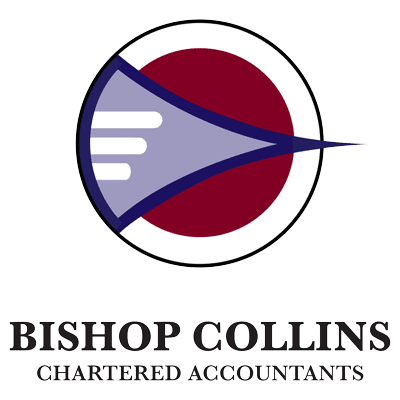Martin Le Marchant
Director Audit
Do You Have an Appreciation for Depreciation?
Along with the Federal Government’s announcement of the increase to the Instant Asset Tax Write Off threshold, from $25,000 to $30,000, a few other things have also changed.
The number of options a business has when calculating depreciation can at times be confusing. Thankfully, simplified depreciation rules are available for small businesses to use, making calculating your depreciation deduction that little bit easier.
From the 7:30pm, 2nd April 2019, to qualify and gain access to these rules, the government has expanded the eligibility criteria to medium sized businesses with a turnover of less than $50 million.
Introducing Three Tiers Of Depreciation
The amendments mean that there will be three tiers for businesses and their accountants to consider within the 2019 financial year.
- The first tier will be the $20,000 threshold for depreciable assets that are acquired before 29 January 2019;
- The second being the $25,000 threshold for assets first used or installed between 29 January 2019 and 2 April 2019;
- And the third tier being the $30,000 threshold for assets first used and installed after the 2 April budget announcement and before 1 July 2020.
And let’s not forget, from 1 July 2020, the threshold reverts to $1000, and will be available to small business entities only.
With a three-tiered asset threshold and staggered commencement dates throughout the 2019 financial year, small business taxpayers will need to review their records carefully in order to determine which assets are eligible for the instant asset write-off and which are not.
Please Explain?
Put Simply, What Are The New Simplified Depreciation Rules?
Using the simplified depreciation rules, assets costing less than the relevant instant asset write-off threshold are written off in the year they are first used, or installed ready-for-use. This threshold applies to each asset irrespective of whether purchased new or second-hand.
The entire cost of the asset must be less than the instant asset write-off threshold. Whether the threshold is GST exclusive or inclusive will depend on your GST status (for further information about GST impacts please contact us).
In working out the amount you can claim, you must subtract any private use proportion. The balance (that is the proportion used in earning assessable income) is generally the taxable purpose proportion. While only the taxable purpose proportion is deductible, the entire cost of the asset must be less than the threshold.
Note that if you later sell or dispose of an asset for which you claimed an instant asset write-off, you include the taxable purpose proportion of the amount you received for the asset in your assessable income.
What Else Do I Need To Remember?
Two important factors to remember when purchasing assets are also worth noting:
- Excluded Assets: You must use the general depreciation rules for the following depreciating assets – as they are specifically excluded from the simplified depreciation rules:
- Leased assets, or assets that are expected to be leased, for more than 50% of the time on a depreciating asset lease.
- Assets you allocated to a low value pool before using the simplified depreciation rules.
- Horticultural plants including grapevines.
- Software allocated to a software development pool (but not other software)
- Capital works
Pooling and Depreciating Assets Costing More Than the Threshold: If the cost of the asset is the same as or more than the relevant instant asset write-off threshold, the asset must be placed into the small business pool.
The small business pool is a list of all your depreciable assets with their current written down values.
Any depreciating assets for which you can’t claim an immediate write-off are allocated to the small business pool. This includes assets that:
- cost the same as or more than the instant asset write-off amount
- you held before you used the simplified depreciation rules (other than excluded assets).
You claim a 15% deduction for assets in the year you buy them (regardless of when the asset was purchased during the year) and a 30% depreciation deduction in subsequent years.
Low Pool Value – Instant Asset Write Off
If the balance of the small business pool after the following adjustments is less than the instant asset write-off threshold you must write-off the pool balance, and you claim the amount as a depreciation deduction, using the following steps:
- Start with the opening balance for the current year
- Add the adjustable value of assets you acquired and started to use in the current year
- Add the taxable proportion of cost additions to the pool in the current year
- Subtract the taxable purpose proportion of proceeds (including insurance payouts) of any assets disposed of in the current year.
If the pool value is less than the relevant instant asset write-off threshold, the pool depreciates by this amount and its closing balance for the year becomes zero.
Confused Yet?
With the three tiered depreciation rules in place at the moment, it can start to become overwhelming to figure out what and when you can claim which asset.
It can be easy to miss out on claiming a business asset just by getting the date wrong at the time you purchased it.
Need Assistance?
We are here to help. Please contact us at Bishop Collins Chartered Accountants so we can assist you in getting your tax return prepared correctly.
[ninja_form id=”1″]
Martin has been with Bishop Collins for 5 years. Starting in 2014, it wasn’t long before he was promoted to a Director in 2015.
With a passion for IT/ Computers, risk management and the desire to be a part of the corporate world, it was a fairly easy decision to pursue a career in accounting.
After completing a double degree at Charles Sturt University, Martin was offered a position with one of the Big 4 accounting firms. Martin’s thorough knowledge of accounting, in particular the specialisation of audit, saw him progress to a client manager position within 5 years of starting his career.
Martin specialises in Audit and Risk Management and has completed a number of qualifications. These include:
- B Business (Accounting)
- IT
- CA
- MBA
- Registered Company Auditor
- Certified Internal Auditor
- Certified Information Systems Auditor
- Registered Legal Trust Examiner


